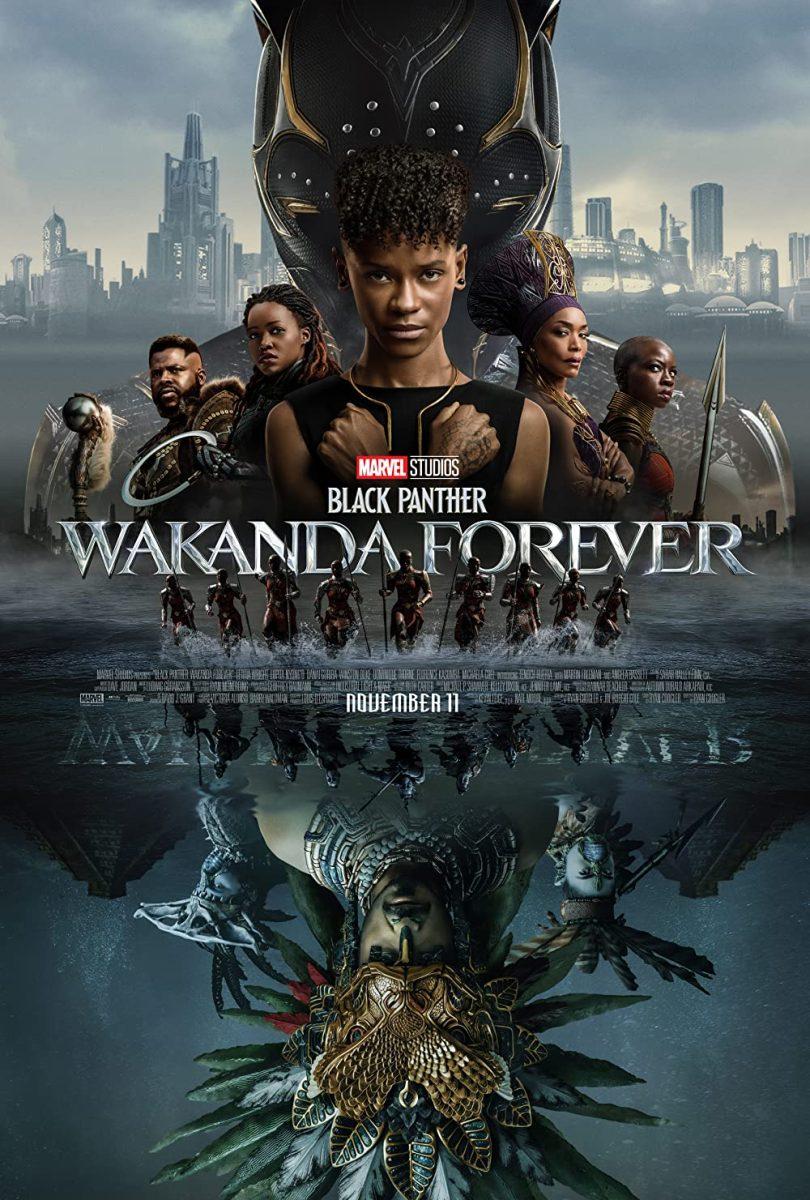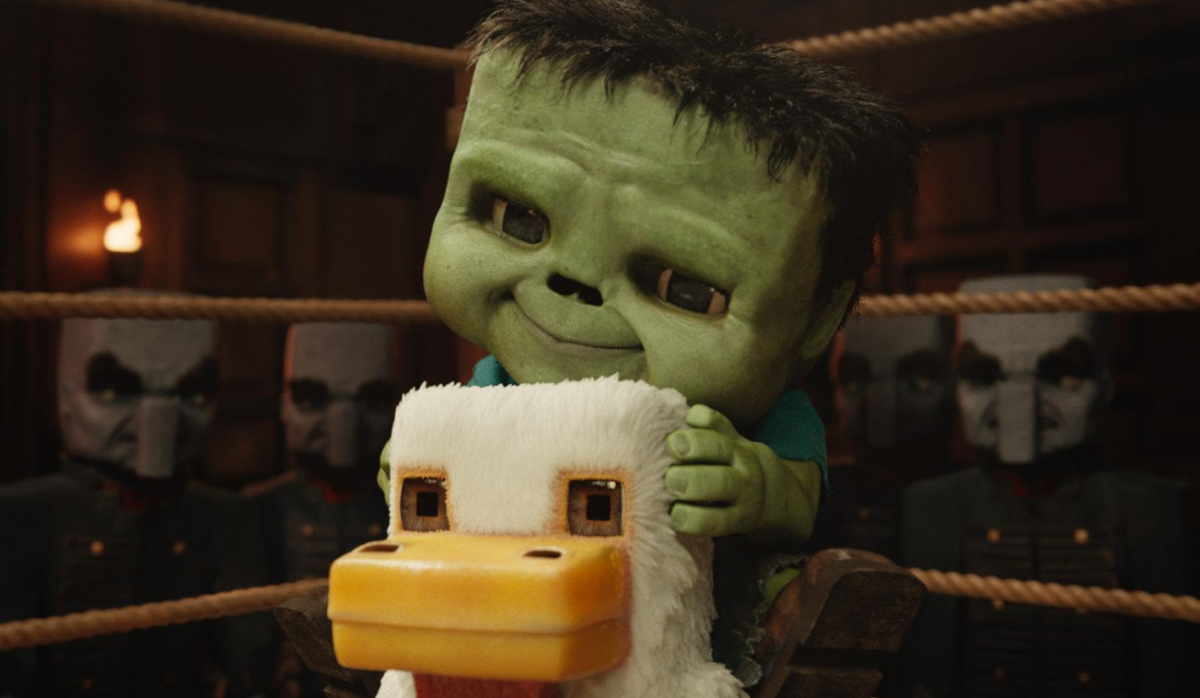Rating: 8.3/10
Spoiler alert: you’ve been warned.
Released on Nov. 11, “Black Panther: Wakanda Forever” is the sequel to the 2018 Marvel origin story. The movie tells the story of the sister of T’Challa, the Black Panther and the struggle for vibranium.
The consensus is generally that sequels cannot match up to the original. However, I am happy to report that is not the case here.
Though the movie was on the longer end of the spectrum at a whopping 161 minutes, it encompassed not only action sequences and powerful women, but also strong character development that had viewers on the edges of their seats.
Seeing multiple non-white women leading fulfilling lives with control over their own destinies was a refreshing break from reality. Each character had their plotline and their own personality, entirely independent from the men they were surrounded with. For example, Ramonda took a United Nations conference by storm and warned the world to not mistake Wakanda for a weak country despite the death of the Black Panther. Likewise, General Okoye led an all-women combat group and defeated an armed troop more numerous in number.
From the original fight between Namor’s people and a U.S. research vessel and the fight that ended with the Wakandan mainland in shambles and Ramonda’s death, each punch and each kick were well choreographed. Beyond the physical, Shuri even comes to understand Namor’s weakness and succeeds in using it against him. The lighting and camera angle of each fight allowed audience members to clearly outline each move. Moreover, action sequences were often filmed against different backdrops, namely an ocean, a research facility, an underwater kingdom, in midair and so forth. Having the villain be born with wings on his feet and the protectors of Wakanda traditionally using spears set the scene for many fast-paced, well-choreographed fights.
As someone who dislikes cliché dialogue, I am happy to report there was little of it. Unfortunately, comedic relief was also minimal. However, Okoye pointing out the irony of a ‘colonizer’ in chains surprised a delighted laugh from the audience. Hand-in-hand with the few corny lines was the lack of genuinely shocking twists and turns. Besides the post-credit scene showing the Black Panther had a son and Michael B. Jordan’s cameo, the movie was relatively predictable. As someone who rarely guesses the culprit in a mystery movie, I found little I had not already been expecting. Of course, the heroine is able to become the next Black Panther and has a kind and forgiving soul. Of course, the young, talented girl is saved by Ramonda and able to help fight the enemies.
The movie starts with a heart-wrenching funeral for the Black Panther, Chadwick Boseman. After the actor’s death in 2020, Marvel decided not to replace him in the movie. Producers Kevin Feige and Nate Moore went with the truth: the Black Panther had passed away. His funeral set the plot with a motif about the grief that accompanies the death of a loved one. This theme, in turn, paves the way for Shuri’s character development.
Following T’Challa’s funeral, Shuri is shown to be stoic and unflinchingly dedicated to her work. This shows the side of grief that is more complicated than unending tears, the side that makes it too difficult to think of the lost loved one so the living keeps their minds occupied elsewhere. Played by Angela Bassett, the queen then takes on the role of a mentor to young Shuri. Right before the entrance of the antagonist, Ramonda even attempts to help Shuri deal with her grief by burning the clothing worn at T’Challa’s funeral. Shuri refuses.
Similarly, when Shuri ingests the concoction that allows her to become the Black Panther, she is able to speak to supervillain Erik Killmonger. When confronted with the motives of her burning desire to kill Namor, Shuri is asked whether she wants to be too noble like her brother. She angrily denies any such claim and vows to end Namor, even if her intentions are fueled by grief and vengeance.
As a result of Namor’s first attack, Wakandan civilians’ lives were uprooted and their minds filled with fear. Still reeling from the death of her mother, Shuri pulls herself together and convenes with the Wakandan council to develop a solution. This is the first scene where Shuri is blossoming into more than the protected princess she was at the beginning of the movie.
Later on, while Namor’s people fought the Wakandans on a ship, Shuri lures Namor to a desert island. In the ensuing fight, he impales her with a spear. She gathers her courage and forces herself to slide off the end of the weapon. As she stood over Namor, contemplating killing him, she remembered the words of evil Killmonger. Despite her overpowering grief-fueled rage, she allows Namor to live and asks for little in return.
Lastly, Shuri is seen burning her mourning clothes and letting her tears flow freely. The character arc of Shuri from an in-denial, angry and vengeful warrior to that of a strong, independent and merciful leader allowed the movie to finish strong.
Alongside the usual Marvel sneak peek with the end credits, the movie ends with a short verbal and visual dedication to their friend Boseman. The perfect way to honor the man who first embodied the beloved superhero.










